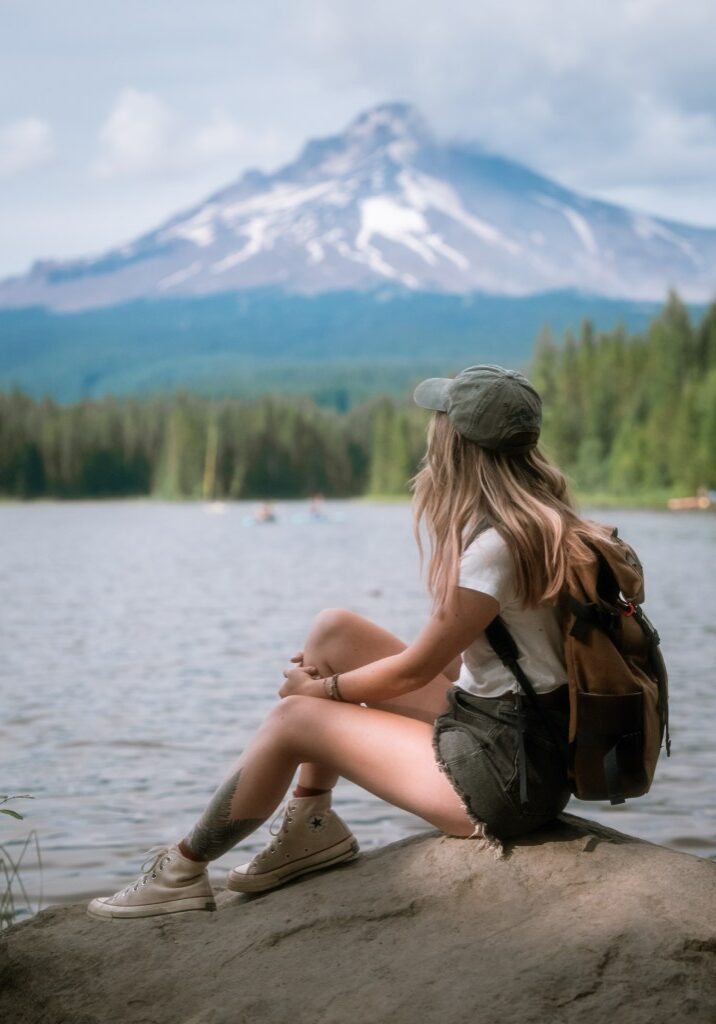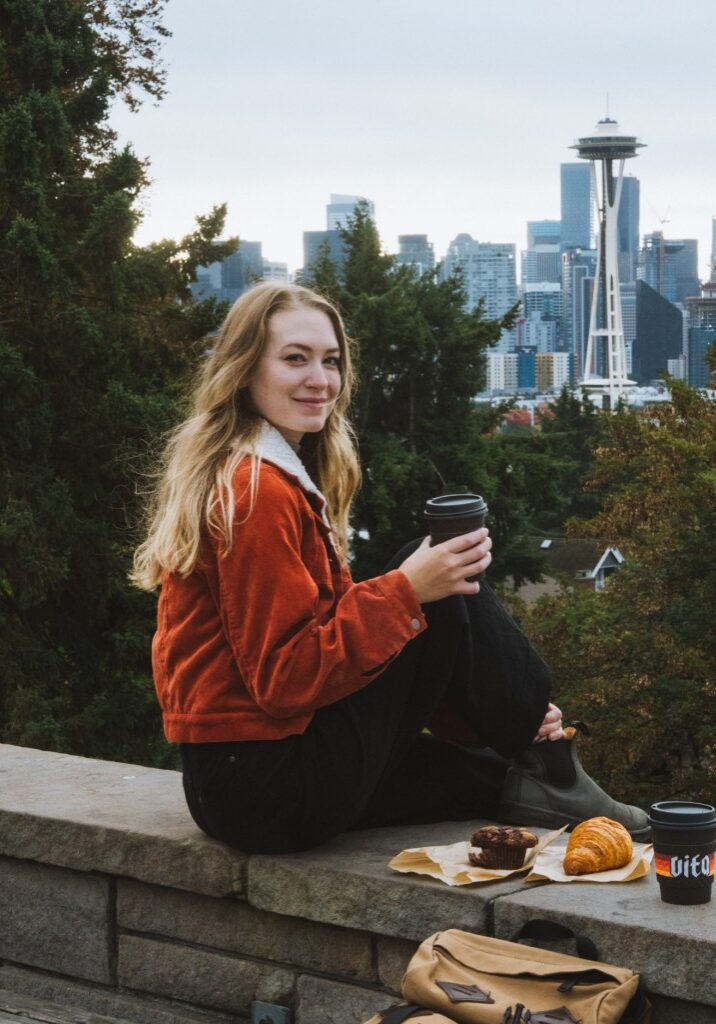| Filed in Hiking & Backpacking | Disclaimer: I use affiliate links and may receive a small commission on purchases. | Leave a Comment
Post summary: Best ways to get outside during COVID-19, tips for finding less crowded trails, apps to use, alternatives to hiking
Cities everywhere are mandating “shelter in place” rules and encouraging social isolation to slow the spread of COVID-19. So, what does this mean for getting outdoors?? My mental health is so closely linked to how much time I spend outside, and I’m sure a lot of you are right there with me. As a healthcare worker, I also recognize how vital it is that we get outside responsibly and maintain the isolation rules. Here are some tips!
IMPORTANT POST UPDATE: Due to increased Search and Rescue (SAR) calls while everyone is heading outside with their abundance of free time, I encourage you NOT to find difficult trails or go more than a few miles. You do not want to end up in the hospital at this time as it would put you at risk and utilize resources that are so needed during this time.

Hike Solo
Not everyone feels comfortable hiking solo. I fell into that category a year ago. Being on a crowded trail lessened my anxiety, but that is not an option right now! On top of all the anxiety caused by the Coronavirus, being told that if you want to go outside you need to do it alone can cause just as much anxiety for some. This time could be a great way to push that boundary with baby steps.
- Start by going to a nearby park that is not crowded. set a timer for 30 minutes to an hour and then put your phone away for that duration. I find that when I’m uncomfortable, I turn to my phone for distractions. Once you feel comfortable doing this move on to step 2.
- Find a non-crowded trail (tips to do this below) less than 1 hour away from your house. Bring items that make you feel comfortable (music or a podcast that you can listen to with headphones, pack a picnic of your favorite snacks, download a map of the area on All Trails so that you’ll never question your whereabouts). A way I relieve some of my anxiety with this is telling someone I trust where I’m going and how long I expect to be gone.
- Backpack solo nearby. This is truly a great time to get off grid as long as you do so responsibly in a way that will not have a potential impact on small communities if you were to be a carrier of COVID-19 (more on this below) For tips on backpacking solo – reference page 10 of my publication GOING IT ALONE where Holly Johnson (@missholldoll) breaks down tips to backpack solo. IMPORTANT: Due to increased Search and Rescue (SAR) calls while everyone is heading outside with their abundance of free time, I encourage you NOT to find difficult trails at this time or do anything that would potentially place you at risk for injury. You do not want to end up in the hospital at this time as it would put yourself at risk and utilize resources that are so needed during this time.
If hiking solo is truly not an option for you due to anxiety, consider having a friend drive separately and meet you at the trail head and hike within shouting distance of each other. It is so important to abide by this rule. If your friend has been in contact with one other person in the last 14 days – they could potentially be a carrier of the virus, as could you. The virus is most contagious before you show symptoms.
What’s the Big Deal if I’m Young and Healthy?
A lot of people are finding that they are temporarily without work or have the option of working remotely now. This makes it very tempting to hit the road with or without friends to hit trails that are normally overcrowded. I feel that temptation. We have to think outside of ourselves in this situation though. If I am carrying the virus and then drive 2-3 hours away to a trail, I will have to stop to get gas/use the bathroom. In doing so I can contract or spread the virus to smaller communities that do not have health care systems in place to handle an outbreak.
Where I currently live and work as an occupational therapist, there are only 24 ICU beds. If I were to road-trip or go to a trail outside of this county and bring the virus back to my patients, this would be detrimental. Or if I were to go on a road trip and contract the virus myself – even without infecting others – I’m still potentially taking up one of 24 ICU beds that could save someone’s life.
It is a lot to think about and weighs heavily on me as I decide where I can go outside for my own mental health. Wherever you are located – know that there are not enough hospital beds to accommodate everyone if the virus spreads rapidly.

So How do I Avoid Impacting Communities?
- Find trails that are not crowded. This is easier said than done. Having lived in Seattle for 3 years, I understand how difficult it can be to find a non-crowded trail nearby. Search the App AllTrails where you can look at how many ratings each trail has. Find trails with less ratings. It may not have epic views, but you’ll still be able to find balance in nature.
- Have a back up plan – if you pull up and the trail head is crowded, move to plan B. If you live near a National Park – consider calling and asking the advice of a Park Ranger for trail recommendations.
- Go at off times. Are you working remotely during this time? Or maybe your job is on hold? You may have the freedom to go on a Tuesday afternoon instead of the weekend.
Find difficult trails. Chances are your gym is also closed. I have found an inverse relationship with increased elevation/mileage and decreased people on the trail. If you have the physical capabilities, find a trail that is challenging with high elevation or long mileage. I bet you’ll hardly see a soul.Due to increased Search and Rescue (SAR) calls while everyone is heading outside with their abundance of free time, I encourage you NOT to find difficult trails at this time. You do not want to end up in the hospital at this time as it would put yourself at risk and utilize resources that are so needed during this time.- Spice up a “boring” trail. If there aren’t any breathtaking views, make the trail more interactive by downloading a flora identifying app! This will help you slow down and learn about all the plants on the trail that help make nature so calming. Some free apps I have found include LeafSnap, PlantSnap and PlantNet
- Bring your own toileting supplies. I’m REAL comfortable using the bathroom outside after countless back-country trips. Avoid using the trail-head bathroom and potential contamination by going in the woods. Be sure to practice Leave No Trace (assuming this is an actual wilderness trail and not a city park LOL).
- I use my Kula Cloth (antimicrobial, machine washable pee cloth) so that I do not have to bury/pack out toilet paper.
- If you use toilet paper and do not pack it out (pack it out and throw it away at home in a ziploc bag) you must bury it in catholes dug 6 to 8 inches deep, at least 200 feet (approximately 70 steps for the average adult) from water, camp and trails. And of course – bring hand sanitizer.
- Come prepared. Bring all the food/beverages you need for the trip so that you are not stopping at local grocery stores or gas stations to grab coffee/snacks/etc.
- Avoid National Park Facilities. I read that some National Parks are waiving entrance fees to allow for more people to practice “social distancing”. We have seen in the past how fast viruses can spread in National Park facilities. If you choose to go to a National Park during this time make sure you do your research to avoid visitor centers, bathrooms and cafeteria spaces. The small communities near national parks would be devastated if COVID-19 was brought in.
- If you have symptoms of the virus – PLEASE do not go outside at all and seek advice from medical professionals over the phone before going into a clinic.

These are strange and dark times, but it has also shown how strong our communities are and people are coming together (in isolation) worldwide to support each other. It has also shown how resilient nature is in bouncing back with less human impact. Focus on positive things and do something for yourself and others everyday. Even in isolation we are all in this together.
-Melissa





